The Courageous Class were three light battlecruisers intended for an Operation in the Baltic in 1917 which never materialized and instead, they were partly converted as aircraft carrier after the war and signing the Washington treaty. Both helped pioneer the interwar fleet air arm but had short careers during WW2, Courageous being sunk by U29 on 17 September 1939 the north sea and Glorious in Norway in June 1940 by Scharnhorst & Gneisenau, each time in ways for what they were not prepared. Furious, converted way sooner as such, and rebuilt again in the interwar survived WW2.
The Courageous class: Born as “Fisher’s follies”
Unlike the Hermes, HMS Courageous and Glorious started their career as Fisher’s idea of a battlecruiser fit for a specific task, making a raid on the Baltic in 1917.
They specifically designed as “light” compared to the previous Repulse and had been planned in 1915 already, to meet First Sea Lord Admiral Fisher Baltic Project ‘s very specific requirements.
These made both vessels “Jackie Fisher’s hush-hush cruisers”. Their size resulted from the need for raw power to give 32 knots (59 km/h; 37 mph), and therefore outrun German cruisers and still perform well in heavy weather. As they were intended to shell valuable objectives, a powerful armament was specified, while protection, even compared to battlecruisers standards of the time was sacrificed t the full, leaving just 3 inches (76 mm) on the belt, forecastle deck, ASW bulges, machinery cofferdam. Compartmentation however was pushed further than previous designs, but using triple torpedo bulkheads. The hull’s lightness was also critical to gain the minimal draught required for the Baltic sea shallow waters, and this was the most important and underlined requirement of all.
Shallow-draught light battlecruisers
For this engineering feat, director of Naval Construction Sir Eustace Tennyson-d’Eyncourt send to Fisher on 23 February 1915 a sketch showing a reduced Renown-class battlecruisers, with one less gun turret and much thinner armour protection. At the time, the Chancellor of the Exchequer forbade anything built heavier than a light cruiser so in 1915, Fisher tried to disguise his project by calling them “large light cruisers” and a veil of secrecy was placed above. Inside the admiralty, these were soon known as the “Outrageous class”. The design was pushed forward with a third ship, which became the Furious.
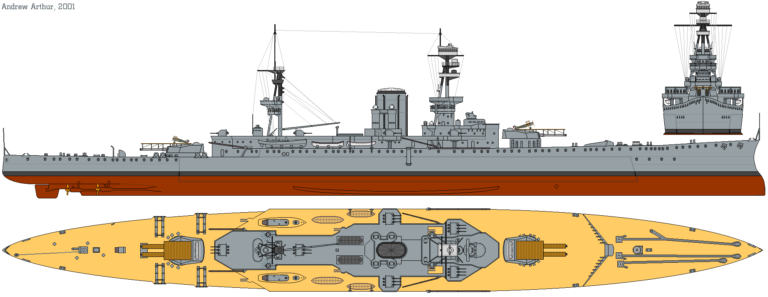
Initial design of the Courageous class
About the “Baltic Operation”
fisher’s pet project was an attempt to rush up Germany’s defeat by landing a substantial force on Pomerania’s beaches, just 100 miles from Berlin. It was assumed this mechanized and motorized force could carve its way in a day to Berlin, in a sector left undefended. A specialist fleet was needed and to secure a bridgehead secured from enemy submarines and ships attacks, a corridor made with minefields and faction submarines had to secure the flanks. More than 600 specialized vessels were to take part in which could have been the second largest amphibious operation of the war since Gallipoli. Landing craft, minesweepers, destroyers, light cruisers, monitors, also included capital ships, the three “battlecruisers” of the Courageous class. However priorities changed and the plan was never developed further and the operation cancelled.
The Courageous class Battlecruisers

HMS Furious: Largest guns ever
Three ships were devised, but Furious was studied a few months later to meet a revised requirement: Its main armament was to comprise two BL 18-inch Mk I guns, the largest guns ever to be fitted on a capital ship in the Royal Navy. So save weight around the behemoth barrel and mount, it was to be housed in single turrets fore aft and the turret was provisioned to carry a 15 in (381 mm) mount and gun if needed, of the development dragged on, of course in twin mounts. Gunnery experts assumed this would push forward the delivery of the ship way beyond the initial operation planning. And also because for just two guns and slow loading, spotting corrections were useless at sea against moving targets, also increasing chances of a direct hit by the adversaries. The secondary armament was now made of BL 5.5-inch (140 mm) Mk I guns, a way to compensate the slow main guns. Furious displacement was also increased but slightly less draught.
Fisher’s quest for shallow draught also met the DNC expectation for ships with hulls operating closer to deep load and lacking in freeboard as well reserve buoyancy and safety. It weighted more than Fisher’s inshore operations requirement, make the DNC reconsider hull’s proportions, and so the Courageous-class ships were the first to be re-evaluated that way.
Courageous design
As drafted on blueprints, the Courageous-class battlecruisers had an overall length of 786 feet 9 inches (239.8 m) for 81 feet (24.7 m) in beam and 25 feet 10 inches (7.9 m) draft fully loaded. Displacement was 19,180 long tons (19,490 t) up to an estimated 22,560 long tons (22,922 t) deeply load. Metacentric height was 6 feet (1.8 m) deeply loaded. Furious was wider at 88 feet (26.8 m) and had a shorter draught at 24 feet 11 inches (7.6 m), displaced 19,513/22,890 long tons FL with a metacentric height of 5.33 feet (1.6 m) FL. All three had a complete double bottom.
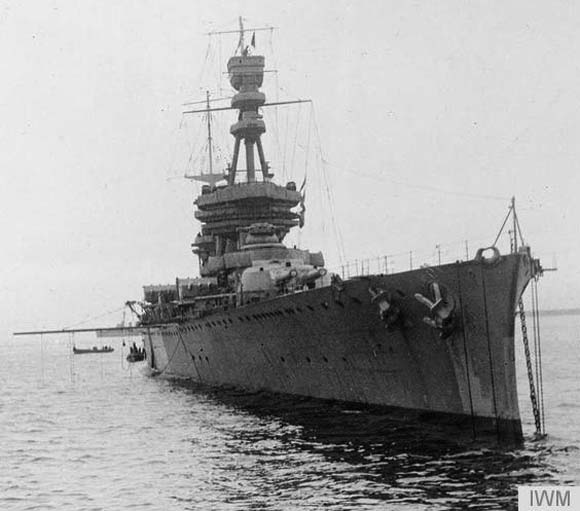
Bow view of the Courageous circa 1917, RN archives Q18130 (cc)
Propulsion
The Courageous-class were the first capital ships in the Royal Navy to have geared steam turbines fed by small-tube boilers. This combination saved space and weight but imposed drastic maintenance requirements. The turbine was already tested on the light cruiser HMS Champion, first with geared turbines in the RN. Four Parsons turbines were located in two engine rooms each connected to propeller a shaft 11 feet 6 inches (3.5 m) in diameter. The eighteen Yarrow boilers were divided into three boiler rooms and total estimated output was 90,000 shaft horsepower (67,113 kW) at 235 psi (1,620 kPa; 17 kgf/cm2) working pressure. However HMS Glorious and Courageous barely reached 32 knots; Furious failed to do so.
They carried 750 long tons of fuel oil up to 3,160 long tons (3,211 t) when filling ballasts used for ASW warfare. The viscous, thick oil was a good barrier to any underwater explosion. This capacity gave the Courageous class an estimated 6,000 nautical miles (11,110 km; 6,900 mi) at a reasonable 20 knots (37 km/h; 23 mph) cruise speed.
Armament
Main: The Courageous-class had four (2×2) BL 15-inch Mark I guns, mounted in hydraulically powered Mark I* turrets. There were only two, designated ‘A’ forward and ‘Y’ aft. They had been intended for a Revenge-class battleship cancelled and could be depressed to −3° and elevated to 20°, and loaded up to this angle. 120 shells were stored per gun, 1,910-pound (866 kg) model exiting the barrel at a muzzle velocity of 2,575 ft/s (785 m/s). Effective range was up to 23,734 yd (21,702 m) with the AP shells.
Secondary: The Courageous-class salso had eighteen BL 4-inch Mark IX guns QF (102 mm) in six triple mounts. This arrangement save space and weight, but the mounts were manually traversed and heavy, so a crew of thirty-two men were needed for each to operate ! In addition their rate of fire was weak for this caliber, only 10-12 rounds per minute in optimal conditions with very well trained gunners and loaders. The mount’s depression was −10°, maximum elevation 30° and they fired a 22-pound (10.0 kg) HE shell at 2,625 ft/s (800 m/s). They could reach a target up to 13,500 yards (12,344 m) afar, but with poor accuracy, and 120 rounds were carried for each gun, so xx in total.
Tertiary: It consisted in a pair of QF 3 inch 20 cwt AA guns, single mount, high-angle Mark II. These were located abreast the mainmast to gain the ebest arc of fire but the mount still allowed a depression of -10° to del with incoming crafts and TBs, and max elevation of 90°. Standard fuse shell weighted 12.5-pound (5.7 kg) and exited the barrel at 2,500 ft/s (760 m/s). Rate of fire was 12–14 rounds per minute at a ceiling up to 23,500 ft (7,200 m). As usual, the ships carried two 21-inch (533 mm) submerged broadside torpedo tubes near ‘A’ turret, and ten torpedoes in storage. The tubes could traverse and be loaded by hydraulic power and used compressed air firing.
Gunnery control was assumed by the two Barr & Strout coincidence rangefinders fire-control directors forward (above the conning tower, armoured hood) and aft (fore-top 9-foot (2.7 m) on the foremast). The secondary armament was also controlled by those. Both turret were fitted with a 15-foot (4.6 m) roof rangefinder under an armoured housing. There was a torpedo control tower mounted above the rear superstructure and AA guns were directed by a 2-metre (6 ft 7 in) rangefinder on the aft superstructure.
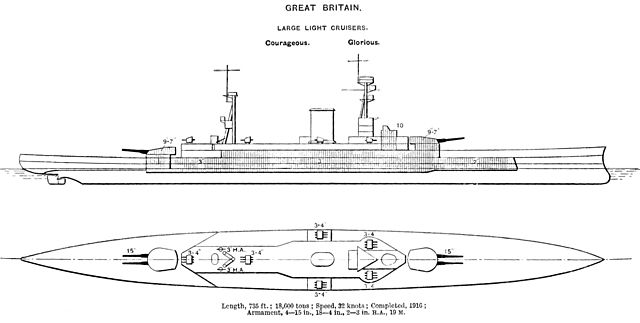
Brassey’s diagram showing the Courageous class armour scheme in 1923
Armour
Although quite thin, the battlecruisers armour was made from high-tensile steel, used structurally on other ships but there, as protection and also part of the structure. The idea was pushed forward by Japanese engineer Hiraga in the 1920s. The waterline belt was 2 inches (51 mm) thick with an extra layer of 1-inch (25 mm), running from barbette to barbette. There was an 1-inch extension forward to the forward bulkhead (2 in) short of the bow. It extended 23 feet (7.0 m) in height, including 18 inches (0.5 m) below waterline. At the level of the forward barbette, there was a bulkhead 3-in thick, located between the upper and lower decks and the same was repeated to the aft barbette. The vertical defense was layered, with four decks ranging from .75 to 3 inches (19 to 76 mm). The latter was the usual protective deck over the magazines and steering gear. As reports of Jutland mentioned magazine explosions the engineers added 110 tons of extra protection was to the deck around the magazines.
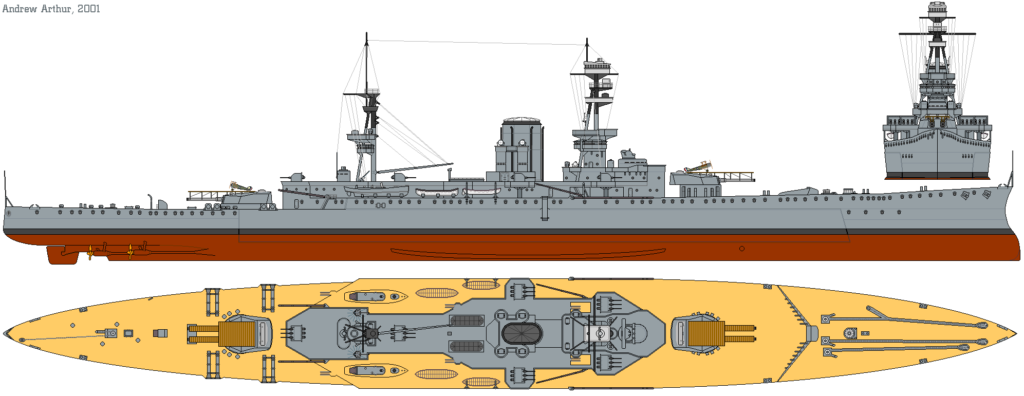
2 views profile of the Glorious in 1927 (cc)
The turrets, their barbettes and the conning tower had armour plates made with Krupp cemented armour. The turret faces were 9 inches (229 mm) thick and the sides 9 inches (229 mm) town to 7-in at the back and the roof was protected by 4.5 inches (114 mm) while barbettes had 7 inches (178 mm) walls, reduced below the armoured decks to 3-4 inches (76-102 mm). The conning tower had 10 inches (254 mm) walls and 3-inch roof. This was the best protected part of the ship, at least against armoured cruisers fire. The main fire-control director had a 6-inches face, 3-in sides and roof. The communications tube had also 3-in walls, from the conning tower to the lower level and the the torpedo bulkheads initially .75 inches (19 mm) thick were augmented to 1.5 inches (38 mm) during construction. There was a a shallow anti-torpedo bulge, integral to the hull. Its shaped was studied to vent the underwater explosion to the surface but later testing showed it needed more depth. There was in particular no extra layers of empty and full compartments to absorb the blast. Speed was the best protection these ships had (and their lower draught) against torpedoes.
Courageous class short career as battlecruisers

HMS Glorious
HMS Courageous was laid down at Armstrong Whitworth, Elswick on 28 March 1915, launched on 5 February 1916 and completed on 28 October 1916. HMS Glorious was laid down at Harland and Wolff, Belfast on 1 May 1915, launched on 20 April 1916 and completed on 14 October 1916. They would serve as battlecruisers until 1924, so around eight years. During her sea trials, in November 1916 off the River Tyne, HMS Courageous ran at full speed in a rough head sea and sustained structural damage, with the forecastle deck deeply buckled in three place as was side plating between the forecastle and upper decks. The torpedo room was submerged as rivets sheared in the vertical flange and the plate opened, but the exact cause remains uncertain, construction defects or debris carried by the waves and acting as ram. HMS Courageous would receive as a result some 130 long tons of steel stiffening and Glorious in 1918.
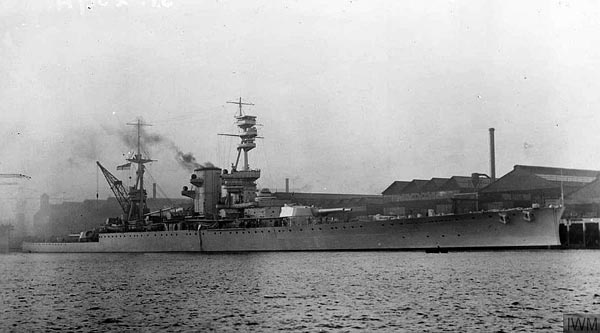
HMS Courageous in October 1917 (IWM)
HMS Courageous was assigned to the 3rd Light Cruiser Squadron, Grand Fleet and flagship of the 1st Cruiser Squadron (“battlecruiser squadron”) in the fall of 1916, completed with new ships as most has been lost in Jutland. HMS Courageous was modified to act briefly as a minelayer in April 1917, but made no missions. Temporarily she was given mine rails on her quarterdeck and could carry over 200 mines. On 30 July 1917, Rear-Admiral Trevylyan Napier took command of the 1st Cruiser Squadron, also Vice-Admiral Commanding the Light Cruiser Force until 26 October 1918.
In mid-1917 both battlecruisers were fitted with no less than six twin torpedo tubes banks mounted either side abreast the mainmast, upper deck and rear turret quarterdeck.
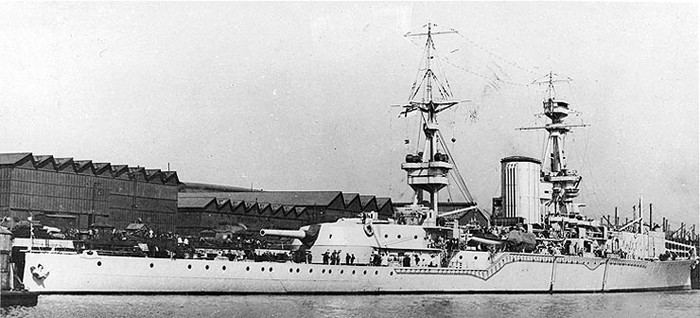
HMS Furious aft 18-in gun
Meanwhile HMS Furious was never really envisioned to join her sister-ships as battlecruiser as she had been modified with a large forward hangar capable for ten aircraft and was left with just one turret. A flight deck was built also and she became an experimental hybrid. In November 1917, the process went to completion as the rear turret was replaced by landing deck and her 18-inch guns found good use in the monitors of the Lord Clive-class which shelled the Belgian coast. Nevertheless, the three battlecruisers were reunited at least in the 1st CS. HMS Courageous became its flagship.
On 16 October 1917, Admiral Beatty, then commander of the Grand Fleet was informed of a sortie of German battlecruisers and ordered most of his light cruisers and destroyers in advance to try to located them. HMS Courageous and Glorious were later sent to reinforce the 2nd Light Cruiser Squadron, tasked to patrol the central North Sea sector. Meanwhile, HMS Furious was detached from the 1st CS to sweep along the 56th parallel as far as 4° East and to return before dark. However two fast German Brummer-class minelayer cruisers slipped through gaps and fell on a convoy bound for Norway on the early hours of 17 October. It’s only on the afternoon that the rampage was signalled and the 1st Cruiser Squadron scrambled there but both German cruisers were long gone. Fitted with powerful turbines they were among the fastest German cruisers of the time.
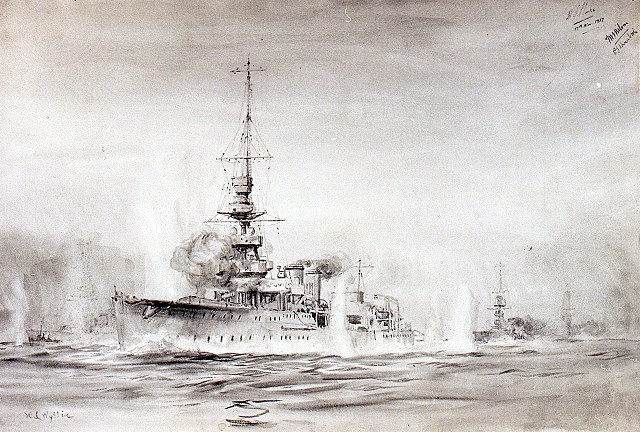
Second Battle of Heligoland, HMS Calypso in action
Second Battle of Heligoland Bight
The only serious action when both battlecruisers were engaged was this battle, as the Germans tried to sweep paths through the British-laid minefields of the north sea. A first raid started on 31 October 1917, with minesweepers escorted by cruisers that sunk ten small faction ships. The Admiralty decided to launch a large operation to destroy these minesweepers and their escort. Based on intelligence reports the operation was launched on 17 November 1917. The 1st CS was sent to cover the 1st Battlecruiser Squadron and and in the rear line, the 1st Battle Squadron made a sortie. All the ingredients were reunited for a major battle by escalation, possibly a repeat of Jutland.
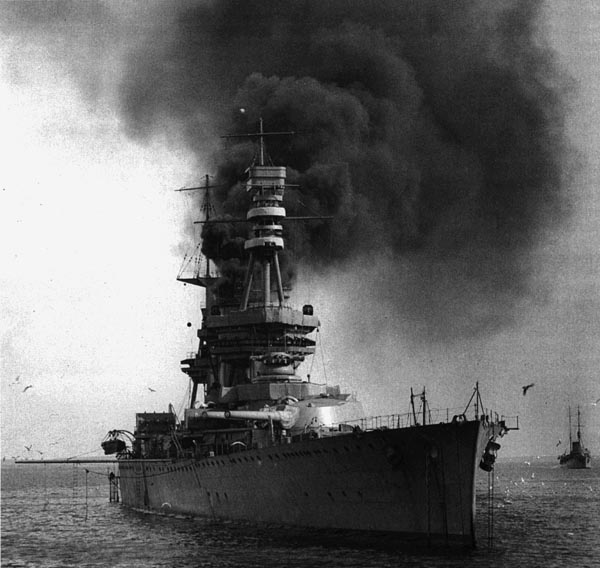
HMS Courageous steaming up circa 1918 (reddit)
The Germans deployed four light cruisers (II Scouting Force) to cover the three divisions of minesweepers, and eight destroyers, plus eight Sperrbrechers which were cork-filled trawlers used to detonate mines. They stayed afloat even after a detonation. Two trawlers were also to mark the swept route. These were spotted at 7:30 a.m. on the rising sun. HMS Courageous and the cruiser HMS Cardiff were the first to open fire that day with their forward artillery at 7:37 am. The Germans immediately laid a smoke screen and the British lost track of most of the small ships, concentrating fire on the light cruisers as soon a they emerged from the smoke. One of the Glorious 15-inch destroyed a forward gun on SMS Pillau, and at 8:33 there was a shell dotaniting permaturely in one of Glorious’s forward turret. As a result, at 9:30 the 1st CS broke off, not risking to enter the minefield mapped. The battle was over for them and the German cruisers left without much harm.
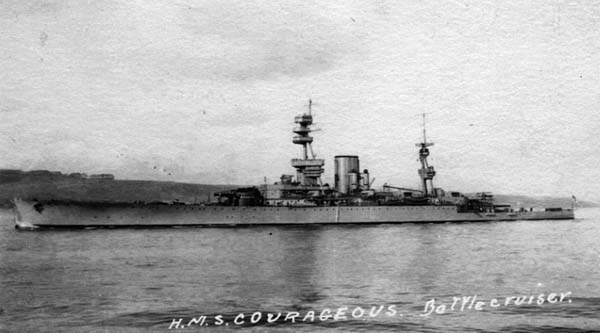
HMS Courageous in 1917 – Credits courageous assoc.
Due to their light construction, both battlecruisers had suffered from their own muzzle blasts and needed repairs and stiffening. Glorious required five days, notably to repait her forward turret. HMS Courageous spent 92 main shells and Glorious 57, and 180 and 213 4-in secondary shells. Only a single hit on SMS Pillau was recorded. HMS Courageous was still fitted to lay mines and these were removed after the battle. Later, flying-off platforms were installed on their aft and forward turrets roofs in 1918 to operate a Sopwith Camel (aft) and Sopwith 1½ Strutter (forward).
HMS Furious was recommissioned on 15 March 1918 as an aircraft carrier and departed for an anti-Zeppelin mission. In the summer of 1918 she participated in the Tondern raid with moderate success. On 21 November 1918, Furious, Glorious ad Courageous were present when the Hochseeflotte surrendered and escorted them to Scapa Flow.
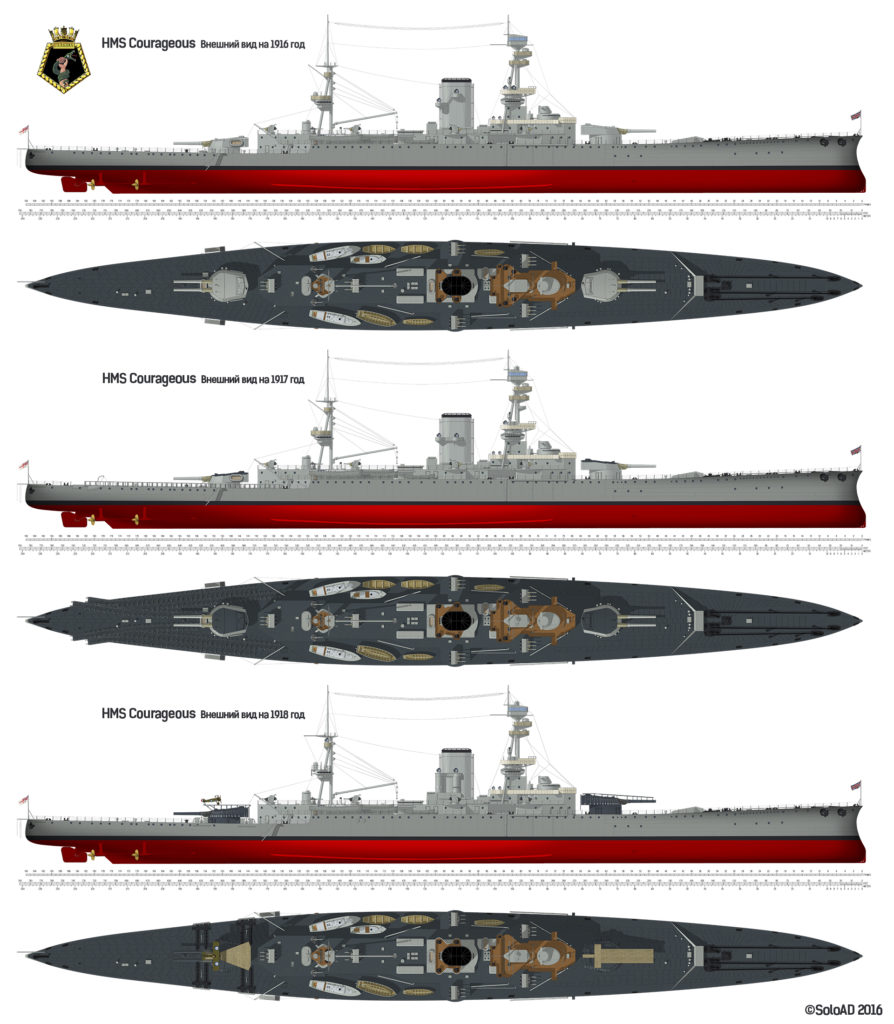
Three aspects of the Battlecruiser HMS Courageous from 1916 to 1920 (wikimedia cc RU)
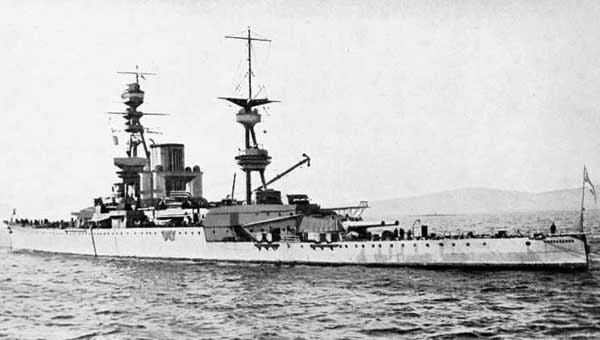
Stern view of HMS Courageous
HMS Courageous (1915) |
|
| Dimensions | 239.8 x 24.7 m x 7.9 m (786 x 81 x 25 ft) |
| Displacement | 19,180 long tons, 22,560 long tons FL |
| Crew | 842 |
| Propulsion | 4 shafts Parsons GS turbines, 18 ST boilers, 90,000 shp |
| Speed | 32 knots (59 km/h; 37 mph) |
| Armor | Belt: 2–3 in (51–76 mm), Decks: 0.75–3 in (19–76 mm), Barbettes: 3–7 in (76–178 mm), Gun turrets: 7–9 in (178–229 mm), Conning tower: 10 in (254 mm), Torpedo bulkheads: 1–1.5 in (25–38 mm) |
| Armament | 2×2 15-in (381 mm), 6×3 4-in (102 mm), 2×3-inch (76 mm) AA, 2×21-in TTs sub |
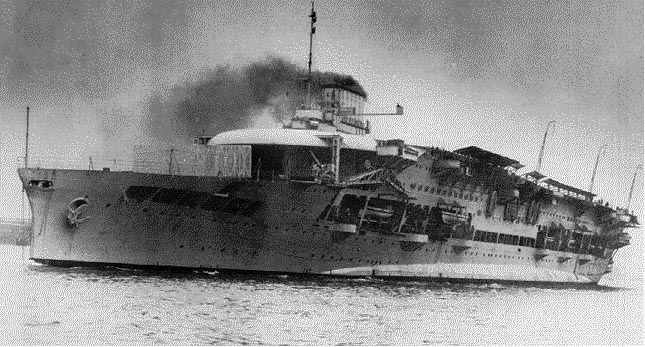
HMS Glorious conversion lasted from 1924 to 1928.
Read More/Src
R. Gardiner, Conway’s all the world’s fighting ships 1906-1921 & 1922-47
http://www.tynebuiltships.co.uk/C-Ships/courageous1917.html
http://www.uboataces.com/battle-courageous.shtml
http://dreadnoughtproject.org/tfs/index.php/Courageous_Class_Battlecruiser_(1916)
https://en.wikipedia.org/wiki/Courageous-class_battlecruiser
https://www.battleships-cruisers.co.uk/courageous_class.htm
Burt, R. A. (1986). British Battleships of World War One.
Buxton, Ian (2008). Big Gun Monitors: Design, Construction and Operations 1914–1945 II
Campbell, N. J. M. (1978). Battle Cruisers: The Design and Development of British and German Battlecruisers of the First World War Era. Warship Special. 1.
Jenkins, C. A., Commander (1972). HMS Furious/Aircraft Carrier 1917–1948: Part II: 1925–1948. Warship Profile 24.
McBride, Keith (1990). “The Weird Sisters”. In Gardiner, Robert (ed.). Warship. 1990.
Newbolt, Henry (1996) [1931]. Naval Operations. History of the Great War Based on Official Documents.
Parkes, Oscar (1990) [1957]. British Battleships.
Roberts, John (1997). Battlecruisers.
Rohwer, Jürgen (2005). Chronology of the War at Sea 1939–1945: The Naval History of World War Two (Third Revised ed.).
——————
The models corner:
-Admiralty Model Works 1/700 Glorious 1918, Courageous 1917
–Kit revew by Jim Baumann


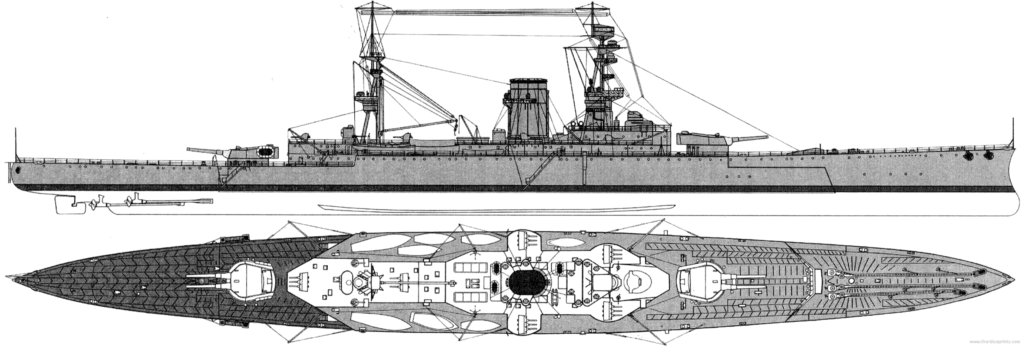
 Latest Facebook Entry -
Latest Facebook Entry -  X(Tweeter) Naval Encyclopedia's deck archive
X(Tweeter) Naval Encyclopedia's deck archive Instagram (@navalencyc)
Instagram (@navalencyc)





 French Navy
French Navy Royal Navy
Royal Navy Russian Navy
Russian Navy Armada Espanola
Armada Espanola Austrian Navy
Austrian Navy K.u.K. Kriegsmarine
K.u.K. Kriegsmarine Dansk Marine
Dansk Marine Nautiko Hellenon
Nautiko Hellenon Koninklije Marine 1870
Koninklije Marine 1870 Marinha do Brasil
Marinha do Brasil Osmanlı Donanması
Osmanlı Donanması Marina Do Peru
Marina Do Peru Marinha do Portugal
Marinha do Portugal Regia Marina 1870
Regia Marina 1870 Nihhon Kaigun 1870
Nihhon Kaigun 1870 Preußische Marine 1870
Preußische Marine 1870 Russkiy Flot 1870
Russkiy Flot 1870 Svenska marinen
Svenska marinen Søværnet
Søværnet Union Navy
Union Navy Confederate Navy
Confederate Navy Armada de Argentina
Armada de Argentina Imperial Chinese Navy
Imperial Chinese Navy Marinha do Portugal
Marinha do Portugal Mexico
Mexico Kaiserliche Marine
Kaiserliche Marine 1898 US Navy
1898 US Navy Sovietskiy Flot
Sovietskiy Flot Royal Canadian Navy
Royal Canadian Navy Royal Australian Navy
Royal Australian Navy RNZN Fleet
RNZN Fleet Chinese Navy 1937
Chinese Navy 1937 Kriegsmarine
Kriegsmarine Chilean Navy
Chilean Navy Danish Navy
Danish Navy Finnish Navy
Finnish Navy Hellenic Navy
Hellenic Navy Polish Navy
Polish Navy Romanian Navy
Romanian Navy Turkish Navy
Turkish Navy Royal Yugoslav Navy
Royal Yugoslav Navy Royal Thai Navy
Royal Thai Navy Minor Navies
Minor Navies Albania
Albania Austria
Austria Belgium
Belgium Columbia
Columbia Costa Rica
Costa Rica Cuba
Cuba Czechoslovakia
Czechoslovakia Dominican Republic
Dominican Republic Haiti
Haiti Hungary
Hungary Honduras
Honduras Estonia
Estonia Iceland
Iceland Eire
Eire Equador
Equador Iran
Iran Iraq
Iraq Latvia
Latvia Liberia
Liberia Lithuania
Lithuania Mandchukuo
Mandchukuo Morocco
Morocco Nicaragua
Nicaragua Persia
Persia San Salvador
San Salvador Sarawak
Sarawak Uruguay
Uruguay Venezuela
Venezuela Zanzibar
Zanzibar Warsaw Pact Navies
Warsaw Pact Navies Bulgaria
Bulgaria Hungary
Hungary

 Bundesmarine
Bundesmarine Dutch Navy
Dutch Navy Hellenic Navy
Hellenic Navy Marina Militare
Marina Militare Yugoslav Navy
Yugoslav Navy Chinese Navy
Chinese Navy Indian Navy
Indian Navy Indonesian Navy
Indonesian Navy JMSDF
JMSDF North Korean Navy
North Korean Navy Pakistani Navy
Pakistani Navy Philippines Navy
Philippines Navy ROKN
ROKN Rep. of Singapore Navy
Rep. of Singapore Navy Taiwanese Navy
Taiwanese Navy IDF Navy
IDF Navy Saudi Navy
Saudi Navy Royal New Zealand Navy
Royal New Zealand Navy Egyptian Navy
Egyptian Navy South African Navy
South African Navy






























 Ukrainian Navy
Ukrainian Navy dbodesign
dbodesign
A very interesting article. Thank you.
Sailors who served on these ships allegedly called them ‘Spurious, Curious and Outrageous’.
I have a photograph of my grandfather able seaman James Barnes aboard HMS Courageous on the occasion of being part of the winning crew in the cutter and ships cutter port regatta 1923.
Hi AJ, nice trivia, feel free to publish it here…